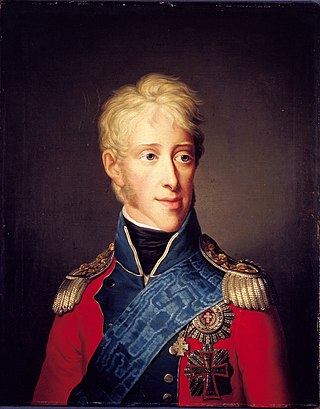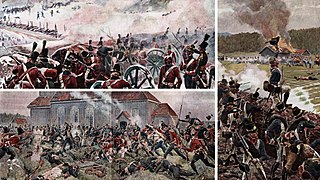Contents
| |||||
| Decades: | |||||
|---|---|---|---|---|---|
| See also: | Other events of 1788 List of years in Denmark | ||||
Events from the year 1788 in Denmark .
| |||||
| Decades: | |||||
|---|---|---|---|---|---|
| See also: | Other events of 1788 List of years in Denmark | ||||
Events from the year 1788 in Denmark .

Christian VIII was King of Denmark from 1839 to 1848 and, as Christian Frederick, King of Norway in 1814.

Frederick VIII was King of Denmark from 29 January 1906 until his death in 1912.

Frederick IX was King of Denmark from 1947 to 1972. Born into the House of Glücksburg, Frederick was the elder son of King Christian X and Queen Alexandrine of Denmark. He became crown prince when his father succeeded as king in 1912. As a young man, he was educated at the Royal Danish Naval Academy. In 1935, he married Princess Ingrid of Sweden and they had three daughters, Margrethe, Benedikte and Anne-Marie. During Nazi Germany's occupation of Denmark, Frederick acted as regent on behalf of his father from 1942 until 1943. Frederick became king on his father's death in early 1947. During Frederick IX's reign Danish society changed rapidly, the welfare state was expanded and, as a consequence of the booming economy of the 1960s, women entered the labour market. The modernization brought new demands on the monarchy and Frederick's role as a constitutional monarch. Frederick IX died in 1972, and was succeeded by his eldest daughter, Queen Margrethe II.

Frederick VI was King of Denmark from 13 March 1808 to 3 December 1839 and King of Norway from 13 March 1808 to 7 February 1814, making him the last king of Denmark–Norway. From 1784 until his accession, he served as regent during his father's mental illness and was referred to as the "Crown Prince Regent". For his motto he chose God and the just cause and since the time of his reign, succeeding Danish monarchs have also chosen mottos in the Danish language rather than the formerly customary Latin.

Frederick IV was King of Denmark and Norway from 1699 until his death. Frederick was the son of Christian V of Denmark-Norway and his wife Charlotte Amalie of Hesse-Kassel.

Sweden and Norway or Sweden–Norway, officially the United Kingdoms of Sweden and Norway, and known as the United Kingdoms, was a personal union of the separate kingdoms of Sweden and Norway under a common monarch and common foreign policy that lasted from 1814 until its peaceful dissolution in 1905.

Princess Ragnhild, Mrs Lorentzen, was the eldest child of King Olav V of Norway and Princess Märtha of Sweden. She was the older sister of King Harald V and Princess Astrid. She was the first Norwegian royal to have been born in Norway since the Middle Ages. In 1953 she married the industrialist Erling Lorentzen, a member of the Lorentzen family of shipping magnates. In the same year they moved to Brazil, where her husband was an industrialist and a main owner of Aracruz Celulose. She lived in Brazil until her death 59 years later.

Frederick, Hereditary Prince of Denmark was heir presumptive to the thrones of Denmark and Norway. He was the only surviving son of King Frederick V by his second wife, Juliana Maria of Braunschweig-Wolfenbüttel.

Prince Charles of Hesse-Kassel was a cadet member of the house of Hesse-Kassel and a Danish general field marshal. Brought up with relatives at the Danish court, he spent most of his life in Denmark, serving as royal governor of the twin duchies of Schleswig-Holstein from 1769 to 1836 and commander-in-chief of the Norwegian army from 1772 to 1814.

Princess Louise Charlotte of Denmark was a Danish princess, and a princess of Hesse-Kassel by marriage to Prince William of Hesse-Kassel.

Charles August or Carl August was a Danish prince. He is best known for serving as Crown Prince of Sweden briefly in 1810, adopted by Charles XIII, before his sudden death from a stroke. Earlier, he had been a general in the Royal Danish Army as well as the Governor-general of Norway. His name before assuming the Swedish title in 1810 was Christian August of Schleswig-Holstein-Sonderburg-Augustenburg, or Christian August of Augustenburg for short.

Prince Harald of Denmark was a member of the Danish Royal Family. He was the third son and fourth child of Frederick VIII of Denmark and his wife, Lovisa of Sweden, and thus brother to Christian X of Denmark and Haakon VII of Norway.

Prince Gustav of Denmark was a member of the Danish royal family. He was the fourth and youngest son and seventh child of King Frederick VIII and Queen Louise.

Princess Dagmar of Denmark was a member of the Danish royal family. She was the youngest child and fourth daughter of Frederick VIII of Denmark and his wife, Princess Louise of Sweden and Norway.

The Theatre War, Cowberry War, Cranberry War or Lingonberry War, was a brief war between Denmark–Norway and Sweden, starting on 24 September 1788, formally lasting until 9 July 1789. Although the decision to launch the attack was taken in Denmark, the majority of the attacking soldiers were Norwegians from the Norwegian army.

The monarchy of Denmark is a constitutional institution and a historic office of the Kingdom of Denmark. The Kingdom includes Denmark proper and the autonomous territories of the Faroe Islands and Greenland. The Kingdom of Denmark was already consolidated in the 8th century, whose rulers are consistently referred to in Frankish sources as "kings". Under the rule of King Gudfred in 804 the Kingdom may have included all the major provinces of medieval Denmark.
Events in the year 1788 in Norway.

The Union between Sweden and Norway is an overriding theme of the history of Sweden in the 19th century. On 4 November 1814, the kingdoms of Sweden and Norway formed a personal union under one king. The two countries had completely separate institutions, except for the foreign service led by the king through the Swedish foreign minister.

The Dano–Swedish War of 1808–1809 was a war between Denmark–Norway and Sweden due to Denmark–Norway's alliance with France and Sweden's alliance with the United Kingdom during the Napoleonic Wars. Neither Sweden nor Denmark-Norway had wanted war to begin with but once pushed into it through their respective alliances, Sweden made a bid to acquire Norway by way of invasion while Denmark-Norway made ill-fated attempts to reconquer territories lost to Sweden in the 17th century. Peace was concluded on grounds of status quo ante bellum on 10 December 1809.
{{cite web}}: CS1 maint: unfit URL (link)